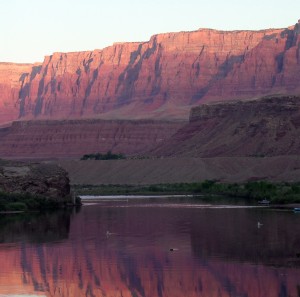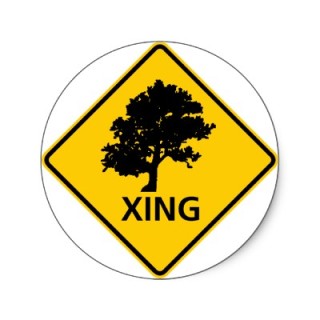Plastic Purge Trailer from Mike SanClements on Vimeo.
Check out Dr. Mike SanClements discuss his efforts to reduce plastic in his life . . . and his new book on the subject!

Plastic Purge Trailer from Mike SanClements on Vimeo.
Check out Dr. Mike SanClements discuss his efforts to reduce plastic in his life . . . and his new book on the subject!

Sunrise on the Colorado River at Lee’s Ferry, Arizona. Photo: L. Reynolds
By Lindsay Reynolds
The Colorado River supplies water to people and ecosystems in 9 western states in the US and Mexico, including almost 5.5 million acres of irrigated lands and nearly 40 million people1. The Colorado, with headwaters in the snowy Rocky Mountains and a path through some of the most arid regions in North America, is one of the most intensively managed river systems in the world. For many years now, research scientists have been warning of impending water shortages in the basin2,3. Last week, the non-profit conservation group American Rivers named the Colorado the most endangered river in the nation. Population growth in combination with limited water and the potential effects of a changing climate are leading down a road to a very dry future. Continue reading

Tree Crossing. Borrowed from Clint Peters.
Trees on the move?! I know you’re thinking, “Come on, Sarah. Trees can’t move.” And, generally, you would be correct in that statement. Tree species are now, however, in a position where movement may be necessary for survival under changing climatic conditions. How trees will move is under debate within the ecological community, but why trees will move is accepted as a survival strategy related to the adaptation of species. Continue reading
By Mike SanClements
Apparently, the only thing us bloggers did over the holidays was sit around and read books. So, much like Kelly’s post earlier this week, I’ll also be writing about something I recently read.
Flight Behavior, the new Barbara Kingsolver novel, discusses climate change more openly and intelligently than any other piece of fiction I’ve come across. And the writing is gorgeous. Continue reading

A toy wagon transports scientific equipment to Toolik Field Station on the North Slope of Alaska (parked here beneath the Trans-Alaska oil pipeline). Photo Credit: Mike SanClements, 2012.
Field work is often the basis of ecological research. It allows researchers to directly assess the natural world and its many complexities. It also gives us access to many things we rarely encounter in our daily lives . . . Adventure? Definitely. Awesome landscapes? Duh. The Arctic? Yep. Wait, what? No, way. Who works in the Arctic? Now, that’s worth writing home about!
And, that is precisely what one of our very own ecologists, Dr. Mike SanClements, did following his most recent trip to the Toolik Field Station in Alaska’s Arctic Tundra. Check out his field notes on his adventures in climate change research via The New York Times’ Dot Earth blog: Creating a Vital Long View for Gauging Environmental Change. The best science (and scientist) is pounding the pavement and communicating with the masses. Go, Mike!
You must be logged in to post a comment.